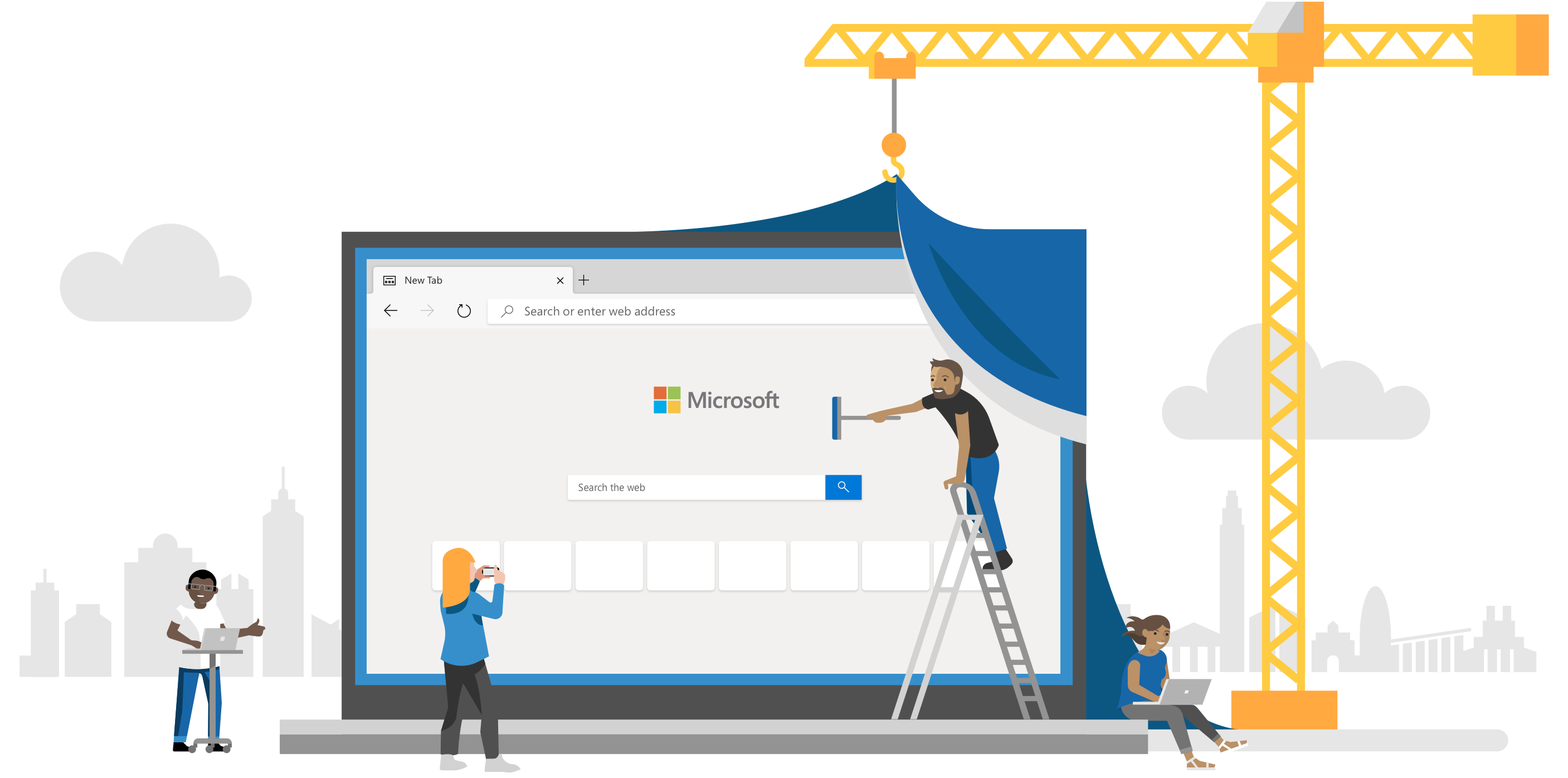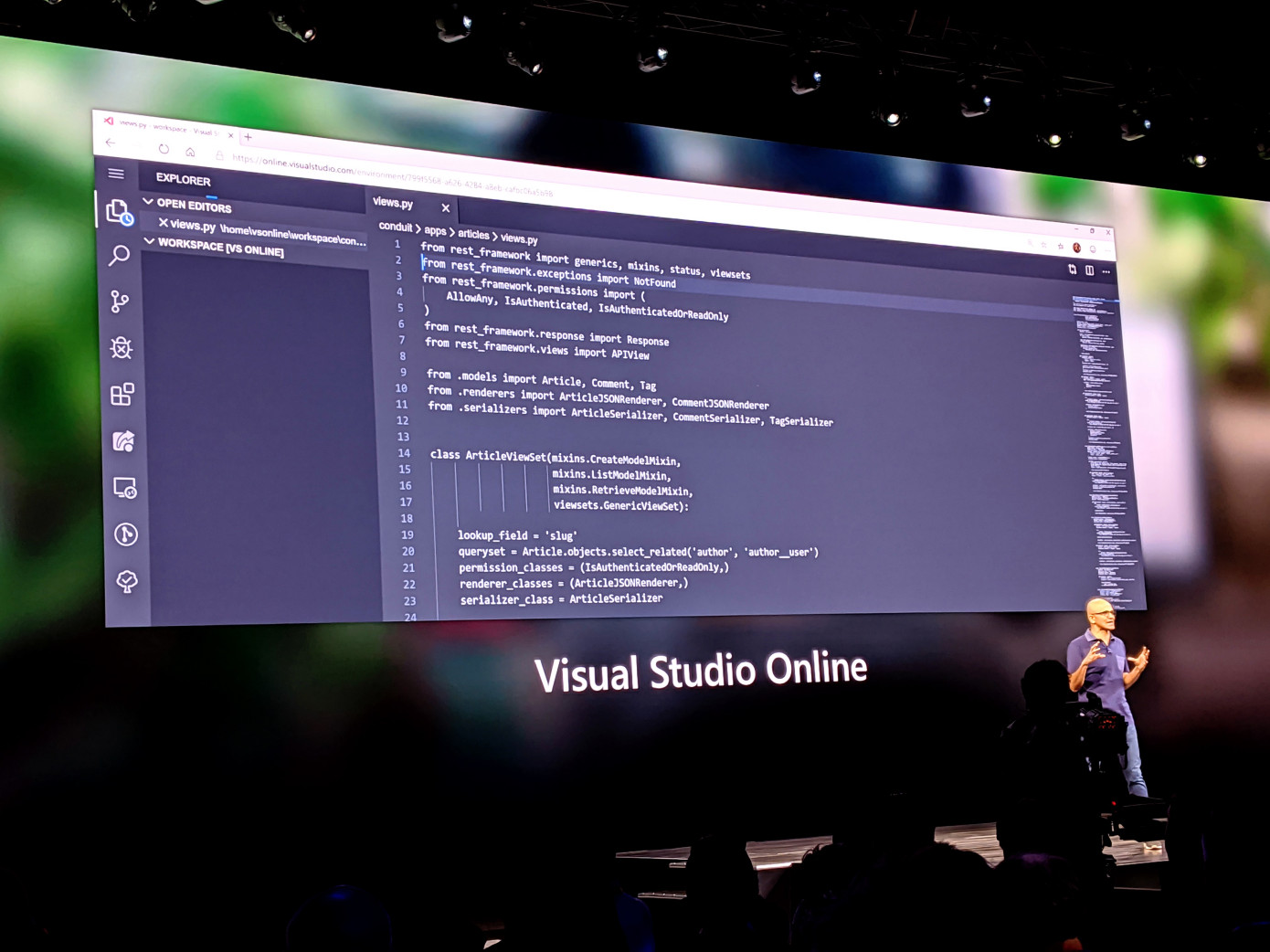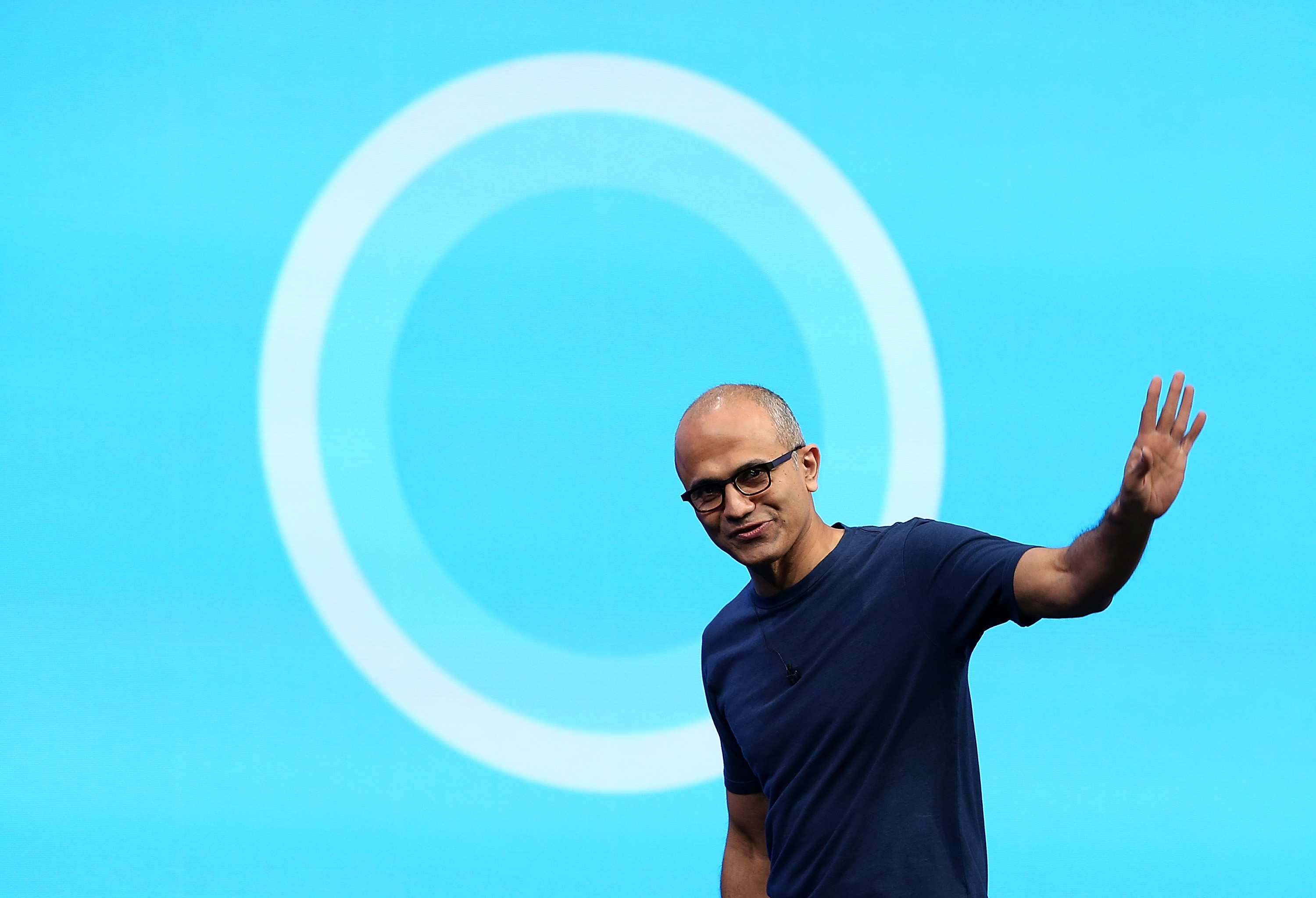Technology
Gradeup raises $7M to expand its online exam preparation platform to smaller Indian cities and towns
Gradeup, an edtech startup in India that operates an exam preparation platform for undergraduate and postgraduate level courses, has raised $7 million from Times Internet as it looks to expand its business in the country.
Times Internet, a conglomerate in India, invested $7 million in Series A and $3 million in Seed financing rounds of the four-year-old Noida-based startup, it said. Times Internet is the only external investor in Gradeup, they said.
Gradeup started as a community for students to discuss their upcoming exams, and help one another with solving questions, said Shobhit Bhatnagar, cofounder and CEO of Gradeup, in an interview with TechCrunch.
While those functionalities continue to be available on the platform, Gradeup has expanded to offer online courses from teachers to help students prepare for exams in last one year, he said. These courses, depending on their complexity and duration, cost anywhere between Rs 5,000 ($70) and Rs 35,000 ($500).

&These are live lectures that are designed to replicate the offline experience,& he said. The startup offers dozens of courses and runs multiple sessions in English and Hindi languages. As many as 200 students tune into a class simultaneously, he said.
Students can interact with the teacher through a chatroom. Each class also has a &student success rate& team assigned to it that follows up with each student to check if they had any difficulties in learning any concept and take their feedback. These extra efforts have helped Gradeup see more than 50% of its students finish their courses — an industry best, Bhatnagar said.
Each year in India, more than 30 million students appear for competitive exams. A significant number of these students enroll themselves to tuitions and other offline coaching centers.
&India has over 200 million students that spend over $90 billion on different educational services. These have primarily been served offline, where the challenge is maintaining high quality while expanding access,& said Satyan Gajwani, Vice Chairman of Times Internet.
In recent years, a number of edtech startups have emerged in the country to cater to larger audiences and make access to courses cheaper. Byju&s, backed by Naspers and valued at over $5.5 billion, offers a wide-ranging self-learning courses. Vedantu, a Bangalore-based startup that raised $42 million in late August, offers a mix of recorded and live and interactive courses.

Co-founders of Noida-based edtech startup Gradeup
But still, only a fraction of students take online courses today. One of the roadblocks in their growth has been access to mobile data, which until recent years was fairly expensive in the country. But arrival of Reliance Jio has solved that issue, said Bhatnagar. The other is acceptance from students and more importantly, their parents. Watching a course online on a smartphone or desktop is still a new concept for many parents in the country, he said. But this, too, is beginning to change.
&The first wave of online solutions were built around on-demand video content, either free or paid. Today, the next wave is online live courses like Gradeup, with teacher-student interactivity, personalisation, and adaptive learning strategies, deliver high-quality solutions that scale, which is particularly valuable in semi-urban and rural markets,& said Times InternetGajwani.
&These match or better the experience quality of offline education, while being more cost-effective. This trend will keep growing in India, where online live education will grow very quickly for test prep, reskilling, and professional learning,& he added.
Gradeup has amassed over 15 million registered students who have enrolled to live lectures.The startup plans to use the fresh capital to expand its academic team to 100 faculty members (from 50 currently) and 200 subject matters and reach more users in smaller cities and towns in India.
&Students even in smaller cities and towns are paying a hefty amount of fee and are unable to get access to high-quality teachers,& Bhatnagar said. &This is exactly the void we can fill.&
- Details
- Category: Technology

Better than expected revenues couldn&t divert investor attention from the fact that Uber still managed to lose more than $1 billion in the most recent quarter as the companystock fell in after-hours trading.
There are bright spots in the latest earnings report, not least that the company managed to stanch the bleeding that had cost the company over $5 billion in the previous quarter.
Revenue grew to $3.8 billion, up from $2.9 billion in the year-ago period, representing a 30% boost. But even as Ubercore business shows signs of stabilizing and its core markets continue to show growth, its other business units appear to be hemorrhaging cash at increasingly high rates.
&Our results this quarter decisively demonstrate the growing profitability of our Rides segment,& said Dara Khosrowshahi, the companychief executive, in a statement. &Rides Adjusted EBITDA is up 52% year-over-year and now more than covers our corporate overhead. Revenue growth and take rates in our Eats business also accelerated nicely. We&re pleased to see the impact that continued category leadership, greater financial discipline, and an industry-wide shift towards healthier growth are already having on our financial performance.&
Losses in earnings at the companyUber Eats business grew 67% to $316 million from $189 million in the year-ago period. And performance in the companyfreight division looks even worse. Losses in freight ballooned by 161%, growing to $81 million from $31 million in the same quarter of 2018.
Also contributing to the companylosses for the quarter were stock-based compensation expenses, which added another $401 million to the tallies against the company.
Given that the lock-up period is about to end for institutional investors, that could spell even more trouble for the company — as institutional investors who bought into the company before its public offering may look to sell.
That said, Uber has taken a number of steps to correct its course and put the company on a path to profitability, which Khosrowshahi says should happen in the next two years.
In October, the company announced the last of three rounds of sweeping layoffs at the company that saw 1,185 staffers lose their jobs. Khosrowshahi called the layoffs a chance to ensure that the company was &structured for success for the next few years.& In an email to staff, he wrote, &This has resulted in difficult but necessary changes to ensure we have the right people in the right roles in the right locations, and that we&re always holding ourselves accountable to top performance.&
With the layoffs behind it, Uber can now focus on some of the big operational challenges it had set for itself through the reorganization that the company has announced. That includes adding new features and technologiesto its Uber Eats delivery program (despite what recent losses at GrubHub may imply about the food delivery business) and pressing forward with another darling of the tech set these days — the companyfinancial services platform.
The launch of this new platform, coupled with a slew of announcements from the company in September, show that Uber may have dialed back on its ambitions, but not by much. As Khosrowshahi said at the event, &We want to be the operating system for your everyday life…. A one-click gateway to everything that Uber can offer you.&
- Details
- Category: Technology
Read more: Uber’s losses top $1 billion, trumping better than expected revenues
Write comment (96 Comments)
Workday announced this afternoon that it has entered into an agreement to acquire online procurement platform Scout RFP for $540 million. The company raised more than $60 million on a post valuation of $184.5 million, according to PitchBook data.
The acquisition builds on top of Workday existing procurement solutions, Workday Procurement and Workday Inventory, but Workday chief product product officer Petros Dermetzis wrote in a blog post announcing the deal that Scout gives the company a more complete solution for customers.
&With increased importance around the supplier as a strategic asset, the acquisition of Scout RFP will help accelerate Workdayability to deliver a comprehensive source-to-pay solution with a best-in-class strategic sourcing offering, elevating the office of procurement in strategic importance and transforming the procurement function,& he wrote.
Ray Wang, founder and principal analyst at Constellation Research says that Workday has been trying to be the end-to-end cloud back office player. He says, &One of their big gaps has been in procurement.&
Wang says that Workday has been investing with eye toward filling gaps in the product set for some time. In fact, Workday Ventures has been an investor in Scout RFP since 2018, and italso an official Workday partner.
&A lot of the Workday investments are in portfolio companies that are complimentary to Workdaylarger vision of the future of Cloud ERP. Todaydefinition of ERP includes finance, HCM (human capital management), projects, procurement, supply chain and asset management,& Wang told TechCrunch.
As the Scout RFP founders stated in a blog post about todayannouncement, the two companies have worked well together and a deal made sense. &Working closely with the Workday team, we realized how similar our companies& beliefs and values are. Both companies put user experience at the center of product focus and are committed to customer satisfaction, employee engagement and overall business impact. It was not surprising how easy it was to work together and how quickly we saw success partnering on go-to-market activities. From a culture standpoint, it just worked,& they wrote. A deal eventually came together as a result.
Scout RFP is a fairly substantial business, with 240 customers in 155 countries. There are 300,000 users on the platform, according to data supplied by the company. The company160 employees will be moving to Workday when the deal closes, which is expected by the end of January, pending standard regulatory review.
- Details
- Category: Technology
Read more: Workday to acquire online procurement platform Scout RFP for $540M
Write comment (91 Comments)WeWorkefforts to cut costs following the ouster of its chief executive officer and a delayed initial public offering looks to be impacting its subsidiaries. Meetup, which WeWork acquired for a reported $200 million in 2017, announced a round of layoffs this morning, TechCrunch has learned.
The company, which helps people foster in-person connections by facilitating events across the globe, has shed as much as 25% of its workforce, most of which were employees of the companyengineering department, sources tell TechCrunch.
&Meetup top priority is building the best possible product for our community of more than 44 million members around the world,& a representative of the company said in a statement provided to TechCrunch. &Today we made some organizational changes with that goal in mind, including restructuring across some of our departments.&
The news follows WeWorkown well-documented attempts at restructuring its high-loss business. Late last month, SoftBank provided the over-valued co-working business a much-needed lifeline in the form of a $5 billion loan, a $3 billion tender offer and another $1.5 billion in equity funding, according to The Wall Street Journal. Thatin addition to the billions already invested by the Japanese telecom giant, which now owns a roughly 80% stake. SoftBankmountain of cash had previously valued WeWork at an eye-popping $47 billion; the latest investment package, however, valued the company at just $8 billion.
Understandably, WeWorknew leadership (former vice chairman Sebastian Gunningham and former president and chief operating officer Artie Minson are serving as co-CEOs) seem to be hyper-focused on its new cost-cutting strategy. Multiple reports have indicated the business is weighing sales of several of its subsidiaries, including Meetup, Managed by Q and Conductor. We&ve asked Meetup whether its parent company enforced the staff cuts and will update this story if we hear back.
As for WeWork, it must make a concerted effort to boost its balance sheet in the next few months if it plans to stay committed to a 2020 IPO. The company initially revealed its IPO prospectus in August, disclosing revenue north of $1.5 billion in the six months ending June 30 on losses of $904.6 million. Shortly after, its co-founder and former CEO Adam Neumann misbehaviors were published in a number of incriminating stories by The Wall Street Journal and other outlets. Neumanntrashed reputation coupled with WeWorkmounting losses forced the company to replace its founding CEO and shelve its IPO, which would have been the second-largest offering of 2019 behind only Uber.
Meetup, founded in 2002, was one of the first IRL social networks. Todaycuts are not the first since WeWork came into the picture, according to earlier reporting by Gizmodo. Meetup shed roughly 10% of its staff amid negotiations for the acquisition and underwent cultural changes as managers pushed for growth and &more aggressiveness in the workplace.&
The future of Meetup is unclear. WeWork may move forward with a sale of the business or pressure its own cost-cutting measures on the company. In a recent email to Meetup members, CEO David Siegel wrote that he appreciated the recent outpouring of support from the community, as it became apparent the company was in a precarious position because of its owner.
&As you may be aware, there has been significant news about our parent company, WeWork, and what this means for the future of Meetup,& Siegel wrote. &As MeetupCEO, I want to personally tell you we&re as committed as ever to bringing people together in person.
- Details
- Category: Technology
Read more: WeWork-owned Meetup confirms restructuring, layoffs
Write comment (96 Comments)ItMicrosoft Ignite this week, the companypremier event for IT professionals and decision-makers. But itnot just about new tools for role-based access. Ignite is also very much a forward-looking conference that keeps the changing role of IT in mind. And while there isn&t a lot of consumer news at the event, the company does tend to make a few announcements for developers, as well.
This yearIgnite was especially news-heavy. Ahead of the event, the company provided journalists and analysts with an 87-page document that lists all of the news items. If I counted correctly, there were about 175 separate announcements. Here are the top seven you really need to know about.
Azure Arc: you can now use Azure to manage resources anywhere, including on AWS and Google Cloud
What was announced: Microsoft was among the first of the big cloud vendors to bet big on hybrid deployments. With Arc, the company is taking this a step further. It will let enterprises use Azure to manage their resources across clouds — including those of competitors like AWS and Google Cloud. It&ll work for Windows and Linux Servers, as well as Kubernetes clusters, and also allows users to take some limited Azure data services with them to these platforms.
Why it matters:With Azure Stack, Microsoft already allowed businesses to bring many of Azurecapabilities into their own data centers. But because itbasically a local version of Azure, it only worked on a limited set of hardware. Arc doesn&t bring all of the Azure Services, but it gives enterprises a single platform to manage all of their resources across the large clouds and their own data centers. Virtually every major enterprise uses multiple clouds. Managing those environments is hard. So if thatthe case, Microsoft is essentially saying, letgive them a tool to do so — and keep them in the Azure ecosystem. In many ways, thatsimilar to GoogleAnthos, yet with an obvious Microsoft flavor, less reliance on Kubernetes and without the managed services piece.

Microsoft launches Project Cortex, a knowledge network for your company
What was announced: Project Cortex creates a knowledge network for your company. It uses machine learning to analyze all of the documents and contracts in your various repositories — including those of third-party partners — and then surfaces them in Microsoft apps like Outlook, Teams and its Office apps when appropriate. Itthe companyfirst new commercial service since the launch of Teams.
Why it matters:Enterprises these days generate tons of documents and data, but itoften spread across numerous repositories and is hard to find. With this new knowledge network, the company aims to surface this information proactively, but it also looks at who the people are who work on them and tries to help you find the subject matter experts when you&re working on a document about a given subject, for example.

Microsoft launched Endpoint Manager to modernize device management
What was announced: Microsoft is combining its ConfigMgr and Intune services that allow enterprises to manage the PCs, laptops, phones and tablets they issue to their employees under the Endpoint Manager brand. With that, italso launching a number of tools and recommendations to help companies modernize their deployment strategies. ConfigMgr users will now also get a license to Intune to allow them to move to cloud-based management.
Why it matters:In this world of BYOD, where every employee uses multiple devices, as well as constant attacks against employee machines, effectively managing these devices has become challenging for most IT departments. They often use a mix of different tools (ConfigMgr for PCs, for example, and Intune for cloud-based management of phones). Now, they can get a single view of their deployments with the Endpoint Manager, which Microsoft CEO Satya Nadella described as one of the most important announcements of the event, and ConfigMgr users will get an easy path to move to cloud-based device management thanks to the Intune license they now have access to.
MicrosoftChromium-based Edge browser gets new privacy features, will be generally available January 15
What was announced: MicrosoftChromium-based version of Edge will be generally available on January 15. The release candidate is available now. Thatthe culmination of a lot of work from the Edge team, and, with todayrelease, the company is also adding a number of new privacy features to Edge that, in combination with Bing, offers some capabilities that some of Microsoftrivals can&t yet match, thanks to its newly enhanced InPrivate browsing mode.
Why it matters:Browsers are interesting again. After years of focusing on speed, the new focus is now privacy, and thatgiving Microsoft a chance to gain users back from Chrome (though maybe not Firefox). At Ignite, Microsoft also stressed that Edgebusiness users will get to benefit from a deep integration with its updated Bing engine, which can now surface business documents, too.

You can now try Microsoftweb-based version of Visual Studio
What was announced: At Build earlier this year, Microsoft announced that it would soon launch a web-based version of its Visual Studio development environment, based on the work it did on the free Visual Studio Code editor. This experience, with deep integrations into the Microsoft-owned GitHub, is now live in a preview.
Why it matters:Microsoft has long said that it wants to meet developers where they are. While Visual Studio Online isn&t likely to replace the desktop-based IDE for most developers, itan easy way for them to make quick changes to code that lives in GitHub, for example, without having to set up their IDE locally. As long as they have a browser, developers will be able to get their work done. .
.
Microsoft launches Power Virtual Agents, its no-code bot builder
What was announced: Power Virtual Agents is Microsoftnew no-code/low-code tool for building chatbots. It leverages a lot of Azuremachine learning smarts to let you create a chatbot with the help of a visual interface. In case you outgrow that and want to get to the actual code, you can always do so, too.
Why it matters:Chatbots aren&t exactly at the top of the hype cycle, but they do have lots of legitimate uses. Microsoft argues that a lot of early efforts were hampered by the fact that the developers were far removed from the user. With a visual too, though, anybody can come in and build a chatbot — and a lot of those builders will have a far better understanding of what their users are looking for than a developer who is far removed from that business group.

Cortana wants to be your personal executive assistant and read your emails to you, too
What was announced:Cortana lives — and it now also has a male voice. But more importantly, Microsoft launched a few new focused Cortana-based experiences that show how the company is focusing on its voice assistant as a tool for productivity. In Outlook on iOS (with Android coming later), Cortana can now read you a summary of whatin your inbox — and you can have a chat with it to flag emails, delete them or dictate answers. Cortana can now also send you a daily summary of your calendar appointments, important emails that need answers and suggest focus time for you to get actual work done thatnot email.
Why it matters:In this world of competing assistants, Microsoft is very much betting on productivity. Cortana didn&t work out as a consumer product, but the company believes there is a large (and lucrative) niche for an assistant that helps you get work done. Because Microsoft doesn&t have a lot of consumer data, but does have lots of data about your work, thatprobably a smart move.

SAN FRANCISCO, CA & APRIL 02: Microsoft CEO Satya Nadella walks in front of the new Cortana logo as he delivers a keynote address during the 2014 Microsoft Build developer conference on April 2, 2014 in San Francisco, California (Photo by Justin Sullivan/Getty Images)
Bonus: Microsoft agrees with you and thinks meetings are broken — and often itthe broken meeting room that makes meetings even harder. To battle this, the company today launched Managed Meeting Rooms, which for $50 per room/month lets you delegate to Microsoft the monitoring and management of the technical infrastructure of your meeting rooms.

- Details
- Category: Technology
Read more: The 7 most important announcements from Microsoft Ignite
Write comment (96 Comments) BMW has been equipping its cars with in-air gesture control for several years and I never paid attention to it. It seemed redundant. Why wave your hand in the air when there are dials, buttons and touchscreens to do the same thing? Until this week, that is, when I took delivery of a BMW 850i loaner equipped with the tech. This is about the future.
BMW has been equipping its cars with in-air gesture control for several years and I never paid attention to it. It seemed redundant. Why wave your hand in the air when there are dials, buttons and touchscreens to do the same thing? Until this week, that is, when I took delivery of a BMW 850i loaner equipped with the tech. This is about the future.
I didn&t know the 850i used gesture control, because, frankly, I had forgotten BMW had this technology; I stumbled upon it. Just make a motion in the air to control the volume or tell the navigation to send you home. Now, in 2019, with giant touchscreens set to takeover cars, I find BMWgesture control smart and a great solution to a future void of buttons.

Itlimited in use right now. There are only a few commands: volume, nav, recent calls and turning on and off the center screen. Iteasy to see additional functions added in the future. Itsorely missing the ability to step back a screen. I want that function the most.
Herehow it works: To control the volume, take one finger and spin it in the air above the center stack. Anywhere. The range is impressive. A person can do this next to the screen or two feet away. A personarm could be resting on the center armrest and lift in the air and twirl their finger. Bam, it controls the volume. Put two fingers up & not spinning, like a flat peace sign & and the screen turns on or off. Make a fist and open it twice to load the navigation or phone (user picks the function).
After using the system for several days, I never had a false positive. The volume control took about 10 minutes to master, while the other gestures worked the first time.
In this car, these commands work in conjunction with physical buttons, dials and a touchscreen. The gestures are optional. A user can turn off the function in the settings, too.
I found the in-air control a lovely addition to the buttons, though. At night, in the rain, they&re great as they do not require the driver to remove their focus from the road. Just twirl your fingers to turn down the volume.
I&m not convinced massive touchscreens are better for the driver. The lack of actual, tactile response along with burying options in menus can lead drivers to take their eyes off the road. For the automaker, using touchscreens is less expensive than developing, manufacturing and installing physical buttons. Instead of having rows of plastic buttons and dials along with the mechanical bits behind them, automakers can use a touchscreen and program everything to be on-screen. Tesla did it first; Ram, Volvo and now Ford are following.
In-air gesture control could improve the user experience with touchscreens. When using BMWsystem, I didn&t have to take my eyes off the road to find the volume — something that I have to do occasionally, even in my car. Instead, I just made a circle in the air with my right hand. Likewise, BMWsystem lets the user call up the nav and navigate to a preset destination (like work or home) by just making another gesture.
As touchscreens take over cars, automakers will likely look to similar systems to supplement the lack of physical buttons. While gestures aren&t as good, they&re better than just a silly touchscreen.
- Details
- Category: Technology
Read more: BMW’s magical gesture control finally makes sense as touchscreens take over cars
Write comment (97 Comments)Page 446 of 5614

 15
15